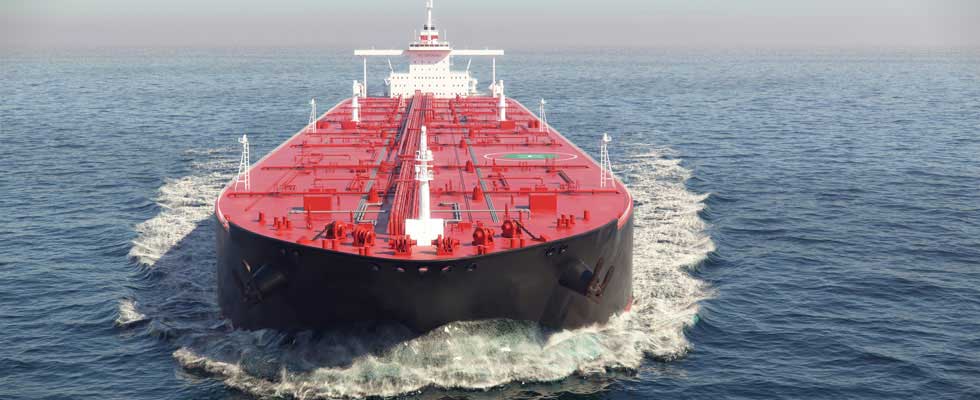
We live in a time of hyperbole, where every week we are forced to discuss historic and unprecedented events in the world, ranging from the ongoing health crisis to various economic indicators and sociopolitical conflicts.
These factors have contributed directly to an extremely damaged global supply chain, resulting in record fuel and commodity prices, material shortages and plant stoppages. Current events have exposed how delicate our globalized supply chain truly is and the extreme risk we have exposed ourselves to in the name of globalization.
Just as we as consumers and business owners began to see relief on the horizon in the form of material availability and cost reduction — especially in the steel industry, which months before had broken the previously unfathomable $2,000 a ton hot rolled coil — Russian forces began a military campaign in Ukraine, which turned back all progress that had been made to that point. What exactly happened that was able to spook the global industrial supply chain?
As we all learned during our 15 minutes of becoming scholars in geopolitical conflict and consequences (myself included), Russia is a world leader in gas exports, supplying Europe with 40% of their imports, as well as being a large contributor to Asia and Africa. Russia and Ukraine are also among leaders in the manufacturing and commercialization of many metal-making raw materials, such as pig iron, coking coal and nickel (a key raw material for making stainless steel and brass).
Prices went through the roof, trading was restricted on many platforms and a general supply fear took over the narrative as inflation became the No. 1 talking point on the news. While these strains on business and the consumer have rightfully been the focal point of the non-humanitarian effects of the conflict, one thing not garnering as many of the highlights is the fragility of our global supply chain.
Just as we saw such a rapid expansion in the past 30 years in the globalization of large corporate supply chains, many have already begun the process of reshoring and modifying technology to not only become more self- or regionally sufficient, but also to maintain the pace of growing regulations from governments. Steelmakers over the past years have begun migrating from traditional blast furnaces to electric arc furnaces, where the primary raw material is scrap that for the most part is locally sourced. With this change, they no longer have to source certain minerals and pig iron that, for a large part, have fluctuated in price and availability depending on transportation costs, lead times, industry activity and political goodwill toward the foreign provider.
Public policy is also playing a part in this shift from large and complex global supply chains to more local or regional ones. Gone are the days of finding loopholes in the North American Free Trade Agreement (NAFTA), allowing for transformation to be sufficient in order to modify the origin of Asian or extra-regional materials into North American products.
The United States-Mexico-Canada Agreement introduced new provisions to control steel-made products to require them to be “melted and poured” in North America, independent of if they were to be transformed or not. The government has since gone one step further in the Infrastructure Investment & Jobs Act, requiring that the steel used be “melted and poured” within the U.S. Those seeking public funds for infrastructure projects will be heavily burdened with compliance documentation to fulfill these requirements. In other areas of the strained supply chain, Congress is working to provide subsidies for American companies looking to build chips within the country to aid the battered and bruised auto industry, which is constantly rewriting projections as the year progresses.
Another way in which we can project public policy forcing reshoring and trade compliance without the use of traditionally consumer-damaging tariffs is competitive manufacturing requirements that serve as quasi-protectionism hidden behind social and environmental politics. Carbon taxes are primarily viewed as the future of international trade requirements, which will force companies looking toward the U.S. market to invest heavily in their process or face heavy penalties for non-compliance. The effectiveness of this initiative is yet to be seen, but it has sparked considerable investment among industrials inside the U.S. and in international partners, such as Mexico, in preparation.
These policies are also impacting national business as the conversation has focused on moving away from fossil fuels into an unfeasible electric future. Policy has already impacted energy by disincentivizing investment in oil and gas exploration and development. These are not industries that are easily ramped up and cannot be viewed as an option for cost alleviation along the supply chain unless the conversation is to maintain them as a long-term solution. Transportation costs will remain high in the foreseeable future.
These crises have brought back to the foreground many of the protectionist policies that had been installed during President Donald Trump’s administration, of which we have seen significant backtracking in recent years (such as the removal of Section 232 steel tariffs on certain countries). Where does that leave manufacturing, commodity business and the consumer going forward? In short, in a precarious situation. The inability of the global supply chain to cohesively work has put a strain on the market.
Prices continue to rise without much relief, and as the global supply chain continues to falter, we shall continue to pass the previous benchmarks with ease. Adding additional regulations into the equation, such as green requirements, will only further shortages. Just as hyperbole has become commonplace in our discussions, so must we recognize that we have not finished breaking records. History will once again be rewritten.


